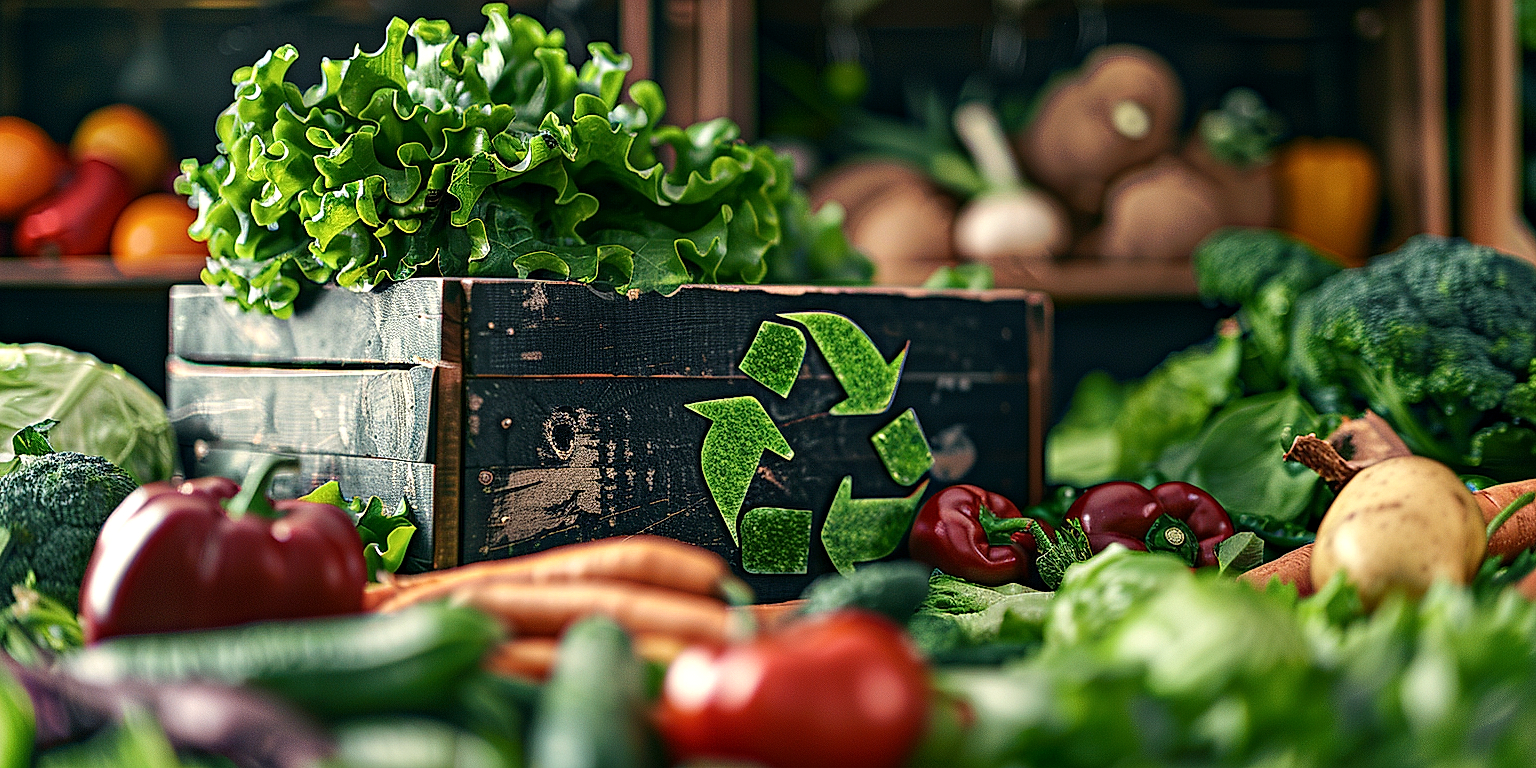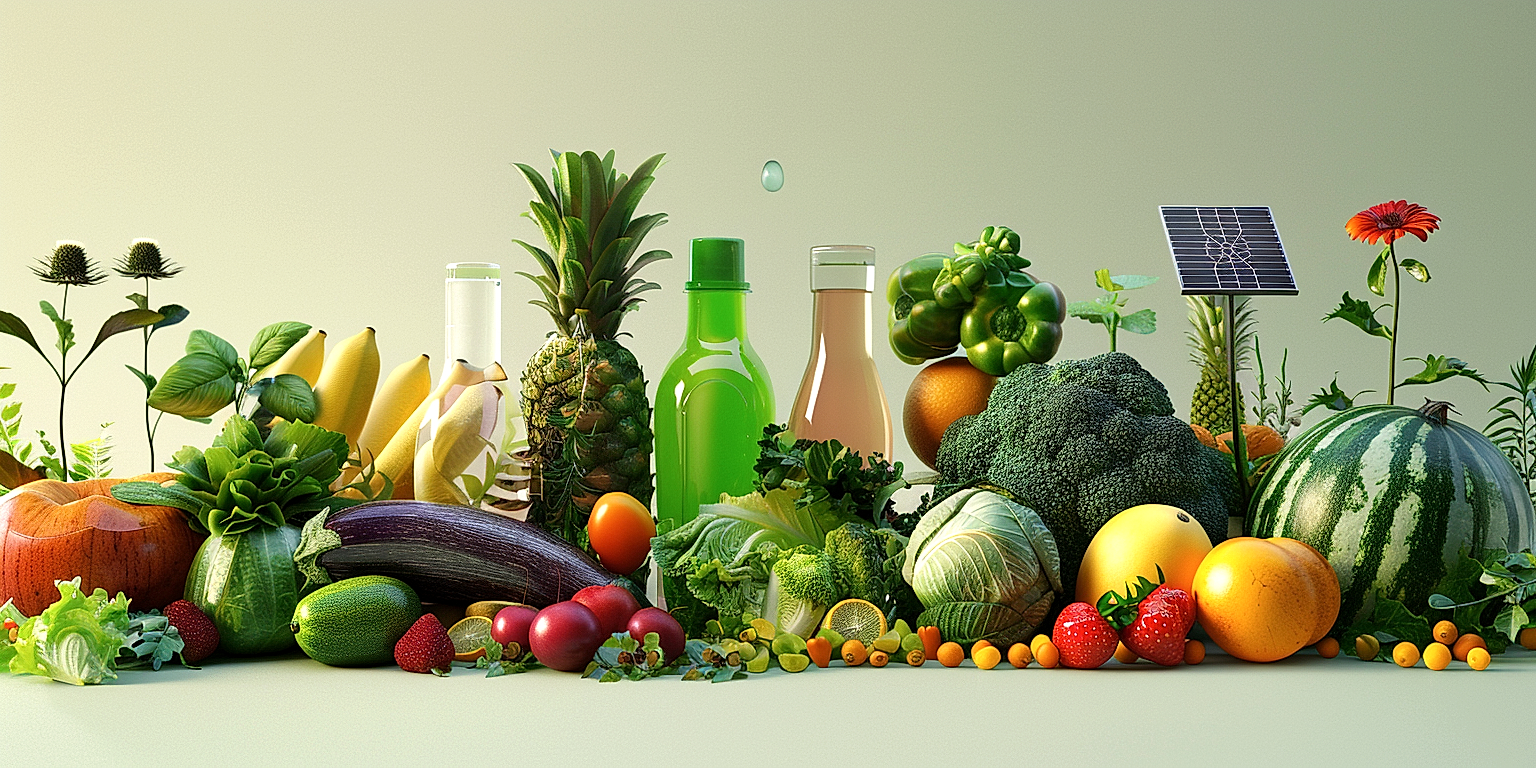In the highly competitive agribusiness industry, prudent utilization of resources has become a non-negotiable necessity.
Waste minimization not only helps to achieve cost efficiency but also aids in sustaining our fragile ecosystem.
A significant amount of waste in the form of byproducts often comes from produce processing.
However, these byproducts can be repurposed.
Using them efficiently is both an economic and environmental imperative.
This article will explore actionable strategies for the effective utilization of byproducts in the produce processing business, focusing on how companies can derive maximum value with minimal wastage.
Contents
- Tips For Efficient Byproduct Utilization In Produce Processing
- 1. Prioritize Recycling and Reusing Processing Wastes
- 2. Develop Products from Byproduct Ingredients
- 3. Apply Modern Technology for Byproduct Transformation
- 4. Establish Effective Waste Management Systems
- 5. Collaborate with Relevant Industries for Byproduct Use
- 6. Incorporate Byproducts into Animal Feeds
- 7. Plan for energy production from organic wastes
- The Bottom Line
Tips For Efficient Byproduct Utilization In Produce Processing
1. Prioritize Recycling and Reusing Processing Wastes
The proper management of byproducts and wastes in produce processing has become notably significant in recent times as businesses strive for sustainability and greater accountability towards the environment.
One prime approach towards efficient byproduct utilization is to prioritize recycling and reusing processing wastes.
This reflects not only on the responsibility of the organization towards the environment but can also lead to significant cost savings and energy efficiencies.
Incorporating recycling and reusing processing wastes within the framework of operations can generate compounded benefits for an organization – financially, socially and environmentally.
Implementing byproduct recycling can minimise the waste headed towards landfills. It significantly cuts down the ecological footprint of the company.
Amazingly enough, many secondary products and byproducts of produce processing have a high potential to be recycled and reintegrated into the production stream, thereby creating a circular economy of sorts.
For instance, peels, rinds, husks, seed, pulp and other byproducts from fruits, nuts and vegetables processing can be creatively reused.
An ideal scenario is where all the byproducts are successfully used as compost or animal feeds, guaranteeing that no waste goes into the landfill at the end of processing.
Recycling and reusing processing wastes can also lower operating costs. It mitigates the need to pay for waste disposal, thereby saving funds.
Moreover, transforming these byproducts into usable commodities can lead to additional revenue streams, contributing to the financial health of the organization.
Notably, some companies have reported that through recycling, they were able to recover valuable materials that managed to slip through initial processing stages.
This promotes resource conservation by reducing the demand for virgin raw materials in the market.
Furthermore, this kind of operation sustains a positive image of the organization in the public eye, demonstrating commitment to environmental protection and upholding social responsibility.
However, such a system for recycling and reusing processing wastes should not be random and isolated. Instead, it needs to be embedded in the core business framework with dedicated efforts for research, development and innovation.
Importantly, employees too should be encouraged and incentivized to keep innovating and finding out new ways for recycling and reusing the byproducts and waste material.
In conclusion, prioritizing recycling and reusing processing wastes can prove to be a game-changer in the produce processing industry, breaking the traditional norms of waste management and demonstrating an effective model for efficient byproduct utilization.
2. Develop Products from Byproduct Ingredients
Utilizing byproduct ingredients to develop new products serves dual benefits: it reduces waste and creates additional revenue for the company.
Produce processing often generates a variety of byproducts, many of which have profitable applications in other industries.
Take citrus peels, for example, which are often discarded during juice production but can be used to make marmalade, flavored oils, and natural cleaners.
Similarly, tomato skins and seeds, byproducts of tomato sauce production, can be transformed into a highly nutritious animal feed.
In fact, some byproducts have properties that make them even more valuable than the original product.
The challenge lies in identifying these byproducts and finding an appropriate market for the developed products.
Many processers choose to sell their byproducts to other companies specializing in byproduct transformation.
This creates a win-win situation: the processor reduces waste and enjoys an additional stream of income, while the second company gets raw materials at a reduced cost.
However, some processers prefer to develop and market new products in-house.
Although this requires substantial knowledge and resources, it can be far more profitable in the long run.
Becoming vertically integrated in this way allows a firm to control the entire product life cycle.
The most successful companies invest in research and development to constantly innovate with byproduct utilization.
They proactively seek new methods to transform byproducts into new products, which proves to be a successful strategy for profitability and sustainability.
More importantly, developing products from byproduct ingredients promotes sustainable practices that modern consumers increasingly value.
In fact, companies which make the effort to reduce, reuse, recycle are often rewarded with loyal customers.
From both a financial and environmental standpoint, then, developing new products from byproduct ingredients is an intelligent business move.
Whether you choose to sell your byproducts to specialized companies or process them further in-house, remember the key is to continually innovate and develop new and profitable applications for them.
3. Apply Modern Technology for Byproduct Transformation
The transformation of byproducts into useful commodities is no longer a far-off dream, thanks to the constantly evolving technology at our disposal.
Modern technology is making it possible to revolutionize how byproducts from produce processing are reused and transformed.
Notably, there are various forms of advanced processing technologies that can convert byproducts into valuable material.
From anaerobic digestion to conversion into bio-plastics, technology offers a plethora of opportunities for efficient byproduct utilization.
One such technology is anaerobic digestion, a biological process that transforms organic waste into biogas and bio-fertilizer.
It represents a sustainable way to manage byproducts while producing renewable energy and nutrient-rich fertilizer in the process.
Beyond that, emerging technologies such as precision fermentation make it possible to convert waste byproducts into valuable protein source for animal feed or even human consumption.
Organic byproducts can be treated with specific bacteria, yeast, fungi or algae, thereby producing high-quality, environmentally friendly proteins.
In a similar vein, enzymatic hydrolysis utilizes enzymes to break down organic waste, resulting in the creation of easily digestible feed ingredients for animals.
This technology can turn waste byproducts from plant-based processing facilities into nutritious feedstock, circumventing the need to grow additional crops specifically for feed production.
Yet another example is the production of bio-plastics from organic waste byproducts.
Advancements in biotechnology have now made it possible to convert byproducts into bio-plastic materials, which can be used in packaging and thus close the loop of production.
By leveraging these technologies, we can truly revolutionize the way we utilize byproducts, benefiting not only our industries but our ecosystems as well.
The potential of these modern technologies truly lies in their ability to transform the narrative of waste, turning what was once considered a problem into an opportunity.
In this way, we reshape our understanding of waste – viewing it as a resource rather than a nuisance.
The key factor here is the willingness to adapt and implement these technologies within produce processing industries.
With the right steps and the right mindset, efficient byproduct utilization through technology can become mainstream in the near future.
4. Establish Effective Waste Management Systems
Byproduct utilization in produce processing is a crucial aspect that significantly influences sustainable industrial practices. Establishing an effective waste management system is key to ensuring efficient byproduct utilization.
The complexity of waste management presents a daunting challenge. It necessitates understanding of various strategies and technologies.
Implementing these waste management strategies dictates a nuanced understanding of the types of waste generated from produce processing and their potential utility.
Understanding and classifying waste is a vital first step towards creating a robust waste management system that enhances byproduct utilization.
A comprehensive waste audit enables businesses to classify their waste based on their characteristics and potential uses.
Upon understanding the nature of the waste generated, a business can implement processing systems to transform such waste into useful byproducts. This could involve composting organic wastes or harnessing energy from them.
Triaging waste can also go a long way in ensuring effective waste management. It involves segregating waste into various categories such as recyclables, compostables, and non-recyclables.
This segregation enables businesses to identify recycling opportunities quickly and efficiently. Waste diversion programs can thus be implemented without any hitches.
Regular maintenance and monitoring of waste management systems is equally important. Such practices ensure that your recycling efforts remain consistent and adaptable to changing waste dynamics. Waste management is, after all, an evolving process.
Also, digitization can greatly enhance waste management processes. This can be achieved through integrating waste management protocols with enterprise resource planning (ERP) systems. ERP systems automate waste tracking and reporting, bolstering waste management efforts.
In addition to the above, businesses must comply with all local and federal regulations relating to waste management. These regulations help to maintain safety and sustainability standards.
Education and training are indispensable components of an effective waste management system. Workers must be effectively trained in waste hierarchy principles: reduce, reuse, and recycle.
Companies might consider collaboration with external stakeholders, such as waste management firms or tech startups specializing in waste processing, to bolster their waste management efforts. These partnerships can provide valuable insights and technologies for improving byproduct utilization.
In the context of produce processing, managing waste effectively is a key determinant of long-term business viability. A business that masters efficient byproduct utilization operates on the brink of a green and prosperous future.
5. Collaborate with Relevant Industries for Byproduct Use
Industries that process produce often generate a significant amount of byproducts.
Often, these byproducts are not used to their full potential, leading to excessive waste and lost profit opportunities.
One of the most effective ways to utilize these byproducts is through collaboration with relevant industries.
When different industries unite their efforts, there is a greater likelihood of discovering innovative and profitable uses for these byproducts.
For instance, industries involved in food production, cosmetics, and pharmaceuticals could all benefit from the reuse of byproducts from produce processing.
By establishing partnerships with these industries, produce processors can ensure that their byproducts are being used to the best of their ability, thus minimizing waste and maximizing profits.
One of the key considerations when collaborating with other industries is to ensure that the byproducts are suitable for the intended use.
For example, if a produce processor is collaborating with a cosmetic company, they must verify that the byproducts are safe and beneficial for the skin.
Similarly, if the byproducts are being incorporated into animal feeds, it is crucial to ensure they are nutritionally balanced and safe for animal consumption.
Collaboration also opens doors for shared sustainability goals.
By using byproducts in their products or processes, businesses can demonstrate their commitment to sustainability and attract more environmentally-conscious consumers.
In addition to environmental benefits, collaborations can lead to the establishment of long-term b2b relationships that hold various benefits for all parties involved.
By collaborating with others, companies can not only find profitable uses for their byproducts but also contribute to the health of the industry and economy as a whole.
The amount of byproduct waste in the produce processing industry can be significantly reduced through effective collaboration with relevant industries.
However, successful collaboration depends on open communication, shared objectives, and a commitment to sustainability.
6. Incorporate Byproducts into Animal Feeds
Byproduct utilization in produce processing also involves incorporating these residues into animal feeds.
Using the byproducts from plants as a source of nutrition for livestock is a practical way to decrease costs related to purchase additional feed, while minimizing waste.
This approach not only ensures efficient byproduct usage, but it also adds value by transforming waste into a source of potential profit.
The nutritional content of these byproducts renders them suitable for animal consumption, which is a perfect way to reutilize what would otherwise have been discarded.
Applying this strategy necessitates a thorough understanding of the nutritional values that these byproducts offer, to serve the dietary requirements of the livestock properly.
Typically, the byproduct ingredients used for animal feeds include vegetable peels, fruit pulp, and husks, which are all rich in nutrients beneficial for the animals’ growth and development.
While the total nutrient compositions of these byproducts may vary, most can serve as main sources of metabolic energy, while also providing necessary protein, vitamins, and minerals for the animals.
Also, using these byproducts can significantly reduce the environmental impact associated with traditional animal feed production, and thus, it indeed opens up a more sustainable approach.
However, it’s important to consider that not all byproducts are suitable for being transformed into animal feeds, with a few may contain substances that could be harmful to the animals.
Therefore, it is crucial to explore the type and quality of byproducts from processing operations that can be safely used in animal diets, while conducting regular tests and analyses to maintain consistency in their nutritional content.
An effective process of byproduct incorporation into animal feeds involves drying the waste materials to extend their shelf life and ease the feed processing.
Moreover, research is ongoing in various parts of the world to explore the application of new techniques for enriching the nutritional value of the feed, through exploiting the byproducts effectively, thus offering the potential for continuous improvements to this approach.
By integrating these practical strategies, produce processors can successfully convert their byproducts into valuable animal feeds, thereby effectively boosting their byproduct utilization efficiency.
In essence, the incorporation of byproducts into animal feeds showcases how efficient byproduct utilization can help produce processors transform their waste into wealth, thereby creating a circular economy that benefits all stakeholders.
7. Plan for energy production from organic wastes
Efficient byproduct utilization in produce processing is incomplete without considering energy production from organic wastes.
Organic wastes, byproducts of produce processing, have great potential to be turned into various forms of renewable and sustainable energy.
One technique utilized worldwide is anaerobic digestion whereby microorganisms break down these organic wastes in the absence of oxygen, producing bio-gas, a mixture of methane and carbon dioxide.
Companies can therefore take these waste products and convert them into bio-gas, a valuable form of energy to power their operations.
This reduces both waste and reliance on traditional, non-renewable sources of energy, paving a path towards a sustainable future.
Planning for energy production from organic wastes provides an opportunity not only to revolutionize how companies approach waste management but also contributes significantly towards the world’s renewable energy production.
Effective planning for bio-energy generation starts with understanding the type and quantity of organic waste produced during processing.
Such planning is crucial to determine the most appropriate technology for waste-to-energy conversion and the economic viability of such initiatives.
Energy production from organic waste also helps in reducing a company’s carbon footprint, enabling them to meet sustainability goals and comply with regulatory standards.
Moreover, the byproducts of waste-to-energy processes can be recycled or reused, like the bio-slag from incineration which can be incorporated as a raw material in construction industry.
The detailed planning of the transition to energy production from organic waste needs to consider the design, logistics, and infrastructure.
It may also include activities such as staff training, the procurement of waste-to-energy equipment, and the establishment of waste sorting and processing procedures.
More importantly, it requires aligning the company’s strategy with the concept of circular economy, whereby waste is not just discarded, but turned into valuable resources.
Collaborating with external entities such as waste management companies, energy providers, and consultants may be necessary to successful plan and implement a waste-to-energy initiative.
Ultimately, through adequate planning, organic wastes can create a win-win situation for produce processing companies, providing green energy and improving waste management, all while promoting environmental sustainability.
The Bottom Line
Throughout the renewal of industry practices, it is increasingly crucial to navigate our focus towards the optimization of waste use.
Prioritizing recycling and reusing processing wastes, as well as developing products from byproducts holds potential for innovation and sustainability.
Complementing this, the application of modern technology to transform byproducts presents a high value opportunity.
An effective waste management system could significantly bolster these efforts, while collaboration with relevant industries could maximize the utility of byproducts.
By incorporating these byproducts into animal feeds and planning for energy production from organic wastes, industries can strengthen their contribution to environmental conservation and sustainability.
The era of waste neglect is over; it’s time to fully embrace the concept of waste-to-wealth for our collective future.




